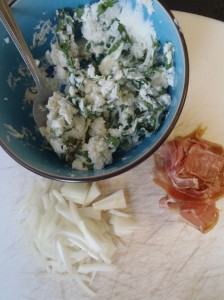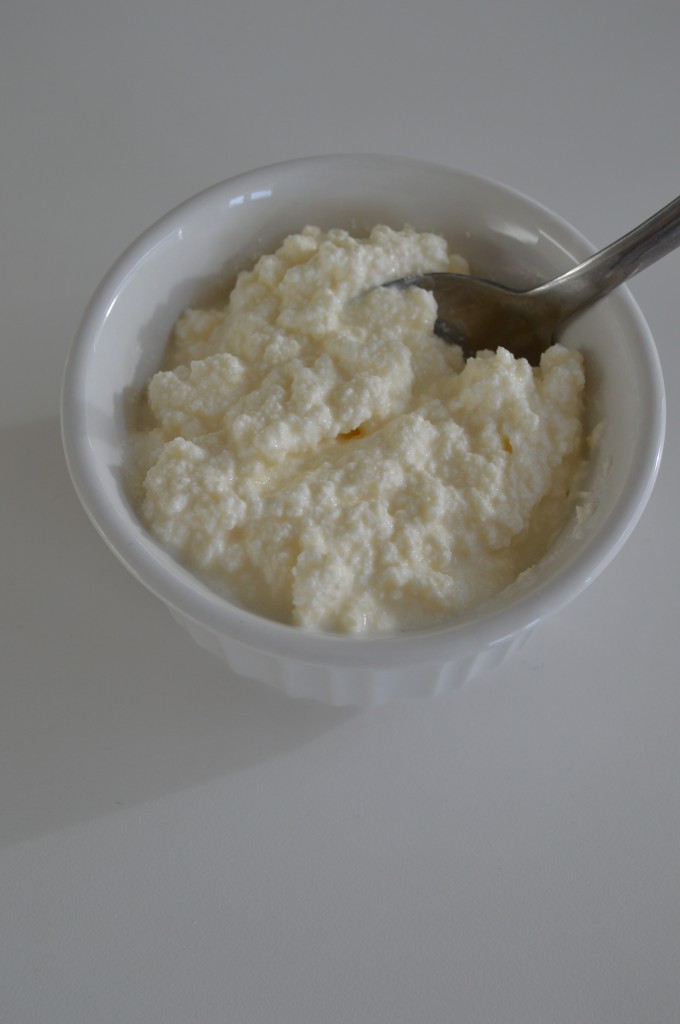I’m starting my foray into cheese-making with a few simple, fresh cheeses. First I’d like to cover the basics.
Cheese: A Blunt Introduction

Cheese is curdled dairy. “Curdling” is the coagulation of proteins. In cheese-making, heat, acid, and certain enzymes are used to coagulate the major protein in dairy, casein. Subjecting dairy to heat and acid or enzymes (or both) will separate the mixture into solid curds and liquid whey. The curds contain most of the protein, fat, and nutrients of the original dairy product. From an anthropological perspective, the principle benefit of cheese-making is that most of the energy and nutrients of the milk are solidified into a longer-lasting, easily-transported mass (that happens to taste amazing).
The whey, while mostly water, does retain a small part of the fat, protein, and nutrients, which brings us to today’s project: cottage cheese.
Cottage Cheese v. Ricotta
Ricotta cheese is made from the whey produced in the making of other cheeses. The word actually means “recooked”. The most famous example is ricotta romana, which was once made from the whey of a hard ewe’s-milk cheese called pecorino. Later in the week I hope to have the whey from a few fresh cheeses, at which time I can try a traditional ricotta. In the meantime I am using whole milk, which to my understanding makes this cottage cheese.
Speaking of which, this is a fantastic way to extend the life of a milk surplus.
Cottage Cheese
Master Ratio – 4:1 whole milk, buttermilk
Ingredients
- 4 L whole milk
- 1 L full fat buttermilk
Procedure
- Combine the milk and buttermilk in a large, stainless steel, heavy-bottomed pot. Place on the stove over medium-high heat.
- Periodically stir the milk and scrape the bottom of the pot with a rubber spatula to prevent scorching.
- Once the milk has separated into curds and whey, remove from the heat and let stand at least 15 minutes.
- Line a colander with cheese cloth and strain the mixture to separate the curds and whey.
Yield: roughly 1.5 L cottage cheese
The finished product had an exceptionally clean, mild taste. While the curd formed the characteristic granular clumps, it had a very smooth mouthfeel. Not rich or creamy, really, but smooth.
